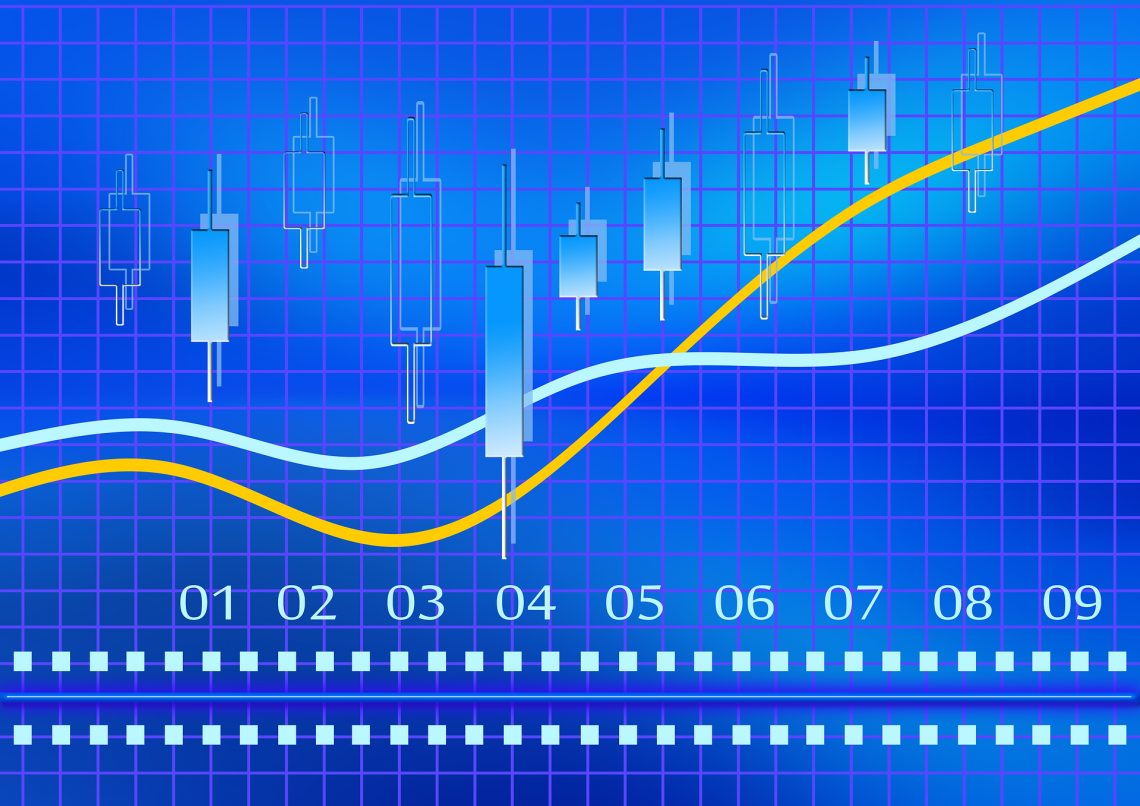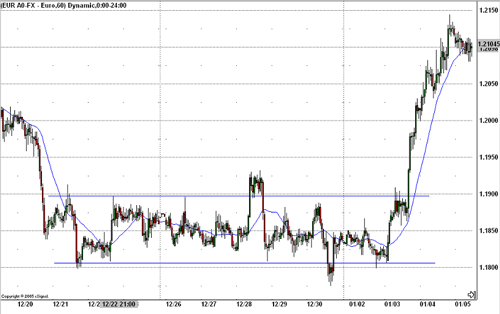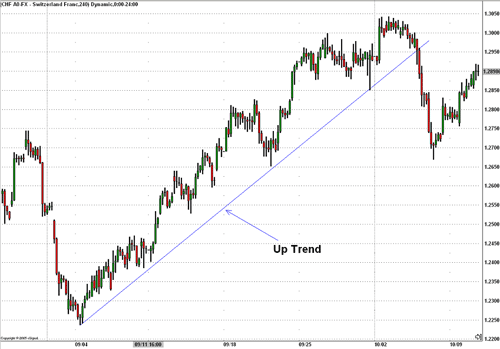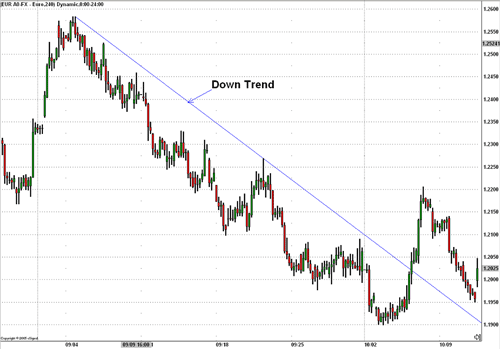
Trend Lines
Charts reveal the actions of bulls and bears. Support in a market can be defined as the point where the market seems to halt for a time and then continue on in the original direction of the move. If each successive support area is higher than the last then the market can be said to be in an up trend. Resistance in a market can be defined as the point where the market seems to halt for a time and then continue on in the original direction. If each successive rally finds resistance and then continues in a downward direction and each resistance area is lower than the last, then the trend for that time period can be said to be down.
First Some History
Trend lines were one of the first technical aspects of the market to be discovered. Technical analysis is based on the fact that price can move in fairly defined trends.
Price can trend in different directions for the same market depending on what time frame you are observing.
Technical analysts use trend lines in two ways: first, to identify the direction of the movement of price; second, to determine if and when the movement will change.
How to Draw a Trend line.
A trend line is a straight line that connects two or more price points and then extends into the future to act as a line of support or resistance. It is drawn through successive maximum price movements, i.e., through a series of two or more successively lower peaks (downtrend) or successively higher valleys (up trend). The more instances of contact, the more the line is reinforced.
Most chartists will draw a trend line through extreme high and low points. This can be dangerous. It is better to draw it through the edges of congestion areas. Those edges show where the majority of traders have reversed direction. Drawing trend lines through the edges of congestion is somewhat subjective and you have to watch out for the temptation to slant your ruler. Remember that the idea of the trend line is to catch 95% of the price action. It is not intended to be an exact point at which the market will reverse.
If you look at an area of congestion you will often see little spikes. This is simply panic dumping by bulls at the bottoms and panic covering by bears at the top. This creates extreme tails or wicks if you are using a candle chart. You want to draw your trend lines on the edge of the congestion areas and not on tails because tails/wicks show little about the crowd other than their tendency to panic.

Up Trend Line
An up trend line has a positive slope and is formed by connecting two or more low points. The second low must be higher than the first for the line to have a positive slope.
Up trend lines act as support and indicate that demand is increasing. A rising price combined with increasing demand is very bullish and shows a strong determination on the part of the buyers (bulls).
As long as the price remain above the trend line, the up trend is considered solid and intact. A break below the up trend line indicates that demand has weakened and a change in trend could be imminent.
Below is a chart of the USD/CHF indicating by a blue up trend line:

Downtrend Line
A downtrend line has a negative slope and is formed by connecting two or more high points. The second high must be lower than the first for the line to have a negative slope. Downtrend lines act as resistance and indicate that supply is increasing. A declining price combined with increasing supply is very bearish and shows the strong resolve of the sellers. As long as price remains below the downtrend line, the downtrend is considered solid and intact. A break above the downtrend line indicates that supply is decreasing and a change of trend could be imminent.
Below is a chart of the EUR/USD indicating by a blue downtrend line:

More on Trend Lines
It is important to remember that the break in an up trend line does not necessarily imply time to sell and a break of the downtrend line does not necessarily imply time to buy.
A security can be in a downtrend, break the trend line for a few bars and then continue to trend lower. Once a security has broken the downtrend line traders should wait for a price reversal confirmation, which can be accomplished by using other indicators or aspects of technical analysis.
The reverse is also true – a security can be in an up trend, break the up trend line for a few bars, only to continue to trend higher. Once a security has broken the up trend line, traders should wait for a price reversal confirmation, which can be accomplished by using other indicators or aspects of technical analysis.
One method of using trend lines might be to identify the underlying trend and then look for trading opportunities in the direction of the break of the trend line. In an up trend traders may look to oversold readings to establish short positions. In a downtrend traders may look to oversold readings to establish long positions.

Things I learned from Forex
You May Also Like

Orders to Enter the Market
12 May 2020
What is a Pip?
11 May 2020


